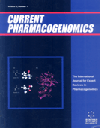-
oa Clinical Importance of Calcium-Sensing Receptor Gene Polymorphism Arg990Gly in the Age of Calcimimetic Therapy
- Source: Current Pharmacogenomics, Volume 4, Issue 2, Jun 2006, p. 153 - 156
-
- 01 Jun 2006
Abstract
Cinacalcet HCl is the first calcimimetic agent available for the therapy of secondary hyperparathyroidism (sHPT) and palliative treatment of parathyroid carcinoma. It acts on the extracellular calcium-sensing receptor (CaSR) as an allosteric activator, i.e. it leads to responses as if hypercalcaemia was present, in the face of normal or even low serum calcium levels. Its most important effect is the suppression of PTH secretion from the parathyroid chief cells. A reduction of PTH levels by 30-40% could be achieved in about 70% of patients with sHPT and maintained for at least two years in clinical studies. Doses required to meet the treatment goal range from 30mg to 180mg per day. There is evidence that one reason for the variability in the response to cinacalcet is a polymorphism (Arg990Gly) in the intracellular tail of the CaSR molecule. It is one of three SNP's in exon 7 of the CaSR gene, the other two being Ala986Ser and Glu1011Gln. Arg990Gly CaSR molecules (with glycine in position 990) appear to be more sensitive to cinacalcet HCl than those with arginine in this position. They are also more sensitive to calcium ions and therefore, more effective than the arginine variant in suppressing PTH secretion at hypercalcaemic levels. In primary hyperparathyroidism, the presence of Arg990Gly leads to less severe clinical courses.


